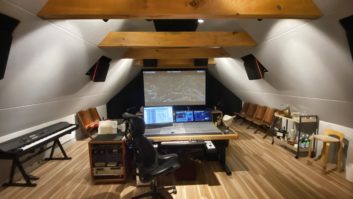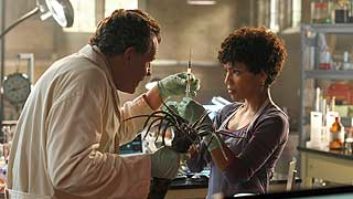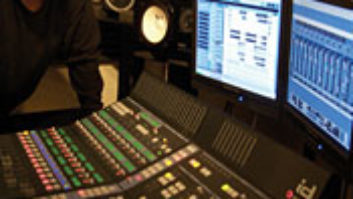I’m sure that there are many, many legal precedents that determine what constitutes a partnership, alliance, collaboration, joint venture, letter of agreement, verbal commitment, or any other situation where two or more people, or two or more companies, decide that they would like to try working together toward a common goal.
Movie and television studios, and their production/distribution arms, bet millions of dollars on such deals with every project. Record companies negotiate with artists on each new contract, sometimes adding partners to a deal, or to a one-off performance. Manufacturers and distributors in our own industry deal with the subtleties all the time in getting product to the public at a certain price. Just last week, iZotope and Native Instruments announced an alliance by forming a new Audio and Music Creator Group, while each retaining their brands and identity.
These are business arrangements, each unique and each implemented for its own reason. They are necessary, of course. Typically, there are lots of dollars at stake for everyone when entering a partnership. But that’s not what I’m talking about here. I’m talking about other types of partnerships, other means of collaboration, the kind where a few industry professionals sit down to dinner and find out by dessert that they have a common desire to push a particular area of the market. Not just their own product, but the market.
Mix has featured two such stories on the cover in the past 11 months. Last May, it was PMC, Dolby and Universal Music Group, along with TIDAL and Amazon, coming together to kickstart the emerging Dolby Atmos Music market. I’m not naïve enough to think that there weren’t formal deals behind the scenes involving promotion, marketing, expenses and whatnot. But the foundation of the arrangement came from of a small group of colleagues and friends who made it happen, from the ground up and not from a surprise executive board decision, with press release to follow.
This month on the cover, we feature a new high-end, reference-quality studio/lab for sound and picture, the end result of an informal, ground-up effort by Meyer Sound, Sony and Netflix. It features Sony’s relatively new Crystal LED direct view display technology and a new Meyer Sound Ultra Reflex monitoring system, and it sits in Netflix’s showcase Dolby Atmos facility, straddling the line of quality control and research between cinema and home. And it all started because Kevin called Miles, while at the same time talking to Jimmy, and they all needed speakers, displays and a facility to make it come together so that they could show film and television and streaming professionals what’s possible.
The aura surrounding Netflix is remarkable. It’s a story that will be taught in business schools, modeled by other industries, and studied by entrepreneurs and technologists for decades to come. Here is a company that launched in 1997, in the heart of Silicon Valley, with the simple idea of entering the massive, Blockbuster-dominated video rental market by introducing subscription pricing and mailing out DVDs.
The aura surrounding Sony and Meyer Sound is equally remarkable, each in its own way. It would be hard to name a company that has done more, across decades and on a global scale, to advance both the home and cinema entertainment experience—from cameras to televisions to microphones, from the 3324 to the Discman. The company owns Sony Pictures Studios, for goodness sakes.
Meyer Sound’s aura, meanwhile, goes back to the birth of quality live sound, back to Steve Miller, then the Grateful Dead, later to find its way into premier venues around the world, from Montreux to Carnegie Hall. The first powered studio monitor, the HD-1. Top-of-the line on Broadway and in Hollywood, as the company branched into new markets, all based on science and measurement, all designed to enhance the entertainment experience.
Then there was Ron Lagerlof of Visioneering Design, one of the top systems and design specialists in the country, who brought all these new technologies together at Netflix. It’s a good story.
There was a time when big companies did nearly everything on their own, holding on to their proprietary systems. If a facility was to be built, then the in-house team might hire a designer or a consultant, demo products and accept bids, then build it themselves and open the doors with a big splash. None of that happened here.
To truly push the state of the art, in whatever field, it helps to bounce off of others. These three companies found that they all had an interest in the future of production and exhibition, from cinema to home. Sony had its new Crystal LED direct view display, Meyer Sound developed a companion Ultra Reflex audio solution, and Netflix brought the will and the space.
If there’s one thing we’ve learned over the past year of isolation, there’s no need to go it alone.




